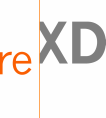Afternoon Session: Design Challenge Workshops Preview
|
Co-Curating for a Digital Future / Susanne Bucke & Pigalle Tacakkoli
The session will use co-creation techniques to guide the group through a series of questions towards a vision for the future museum. They will explore issues around collecting digital information for the future, involving the public in the curation of a digital collection, and imagining how audiences will participate with this in future years. Exploiting Unusual Spaces for Participation / Jen Wong
How can we create non-museum like spaces within museums that provoke novel forms of audience participation? Moving participants beyond the confines of the museum, this workshop explores the basic ingredients for successful participation through examples of immersive experiences. Harnessing unusual and surprising elements to shape novel forms of participation, the group will design an experience to communicate an abstract concept in visceral ways, for a designated ‘unusual’ space. Participants will then discuss how these principles can be translated into museums. Hack-the-Box: Re-Programming the Museum Experience / Clare Brown
Hack the Box: Re-Programming the Museum Experience was a design-a-thon and prototyping collaboration between the Corcoran Gallery of Art, The Corcoran College of Art + Design, and BrivoLabs, supported by Brivo Systems and TopCoder. Over the course of three days, multi-disciplinary teams explored new opportunities for identity-based technology in museums, and in particular, the future of the visitor experience at the Corcoran Gallery of Art and its soon-to-be dispersed art collection. Following on the success of “Hack the Box” this workshop will explore the process and findings of “Re-Programming the Museum Experience.” Participants will have an opportunity to engage with prototypes from the design-a-thon, and share their own examples of technology enhancing the museum experience, both within and without the built environment of a museum. Let's get Phygital / Dave Patten
"One of the things our grandchildren will find quaintest about us as that we distinguish the digital from the real, the virtual from the real” – William Gibson. Museum’s are collections of real physical objects – each of which can tell a multitude of stories. These objects are often unattractive or impenetrable or their significance is not obvious to the visitor. Technology is increasingly providing us with new ways to interpret and engage with these objects and we are beginning to see the boundaries or the real and virtual world blur. This session will explore how we can use current and emerging technologies to bring objects and their stories to life. The Power of the Real in the Age of the Virtual / Peter Higgins
It may be increasingly important that we embrace real time, real objects and real objects as our lives become more synthetic and reliant on digital connectivity. How will museums respond through their architectural presence, the manifestation of their collections and even through their emerging relationship with the digital domain ? |
Niche Audiences, New Approaches / Christopher Muniz & Charlie Barr
From the design of specialised museums to integrating handheld technology as interpretation, designers have been both inclusive and exclusive in targeting niche audiences. This workshop explores how exhibitions, museums and heritage sites have designed for the needs of specific audiences, and questions how viable these models are for museums of the future. Participants will draw a collective Anatomy of the Audience mapping how visitors learn in the 21st century, and build a Cloud of Influence exploring new approaches to storytelling and participation in our daily lives. Is the road to audience engagement paved with niche audiences? Re-Imagining the Museum / Stephen Greenburg & Rachel Morris
How many museums engage with the fundamental questions – Why am I here? Why are we here? – What is this museum saying about who we are? And whom is the museum having a conversation with? More prosaically, what kind of experience makes the ‘Crowded Museum’ work? We will look at how much title sequences convey in 1 minute 36 seconds compared to museums, and how they could be transformed by, performance and events, theatre, installation, digital and social media - interventions that are less capital-intensive. This workshop will look at a number of well-known museum spaces post capital works and ask whether they work well enough and how they could be transformed by interventions that might be interpretive, performance and events, theatre, installation, digital and social media, interventions that are less capital-intensive but better address the conversation between visitor and museum, between the visitor and why objects are here, and the stories they tell and interventions that make the visitor feel welcome. Sequencing Space / Katherine Skellon
Museums use sequence to build meaning, in all its emotional and intellectual complexity. From gallery to gallery, from object to object, we move through sequences that prepare us, hone our attention, include and exclude, juxtapose and evoke. In being sequenced, objects and spaces gain impact and meaning through their juxtaposition with what precedes and follows them. By forming into sequence two kinds of raw material: cardboard boxes and music we will model a museum in cardboard, light, colour and Sellotape and in sound, where musical tones might evoke space, arrangement of objects, atmosphere. Our aim will be to see what imaginative character emerges both within each element and within a sequential relation. Staging Emotional Environments / Noel McCauley
This workshop investigates designing for audience engagement and participation from an emotional perspective. It focuses on the task of creating interpretative story-telling environments that engage with the audience on an emotional level to create memorable learning experiences and facilitate the communication of knowledge. The goal of the workshop is to understand how emotional sequences can respond to exhibition themes and be translated into spatial narrative compositions. |


